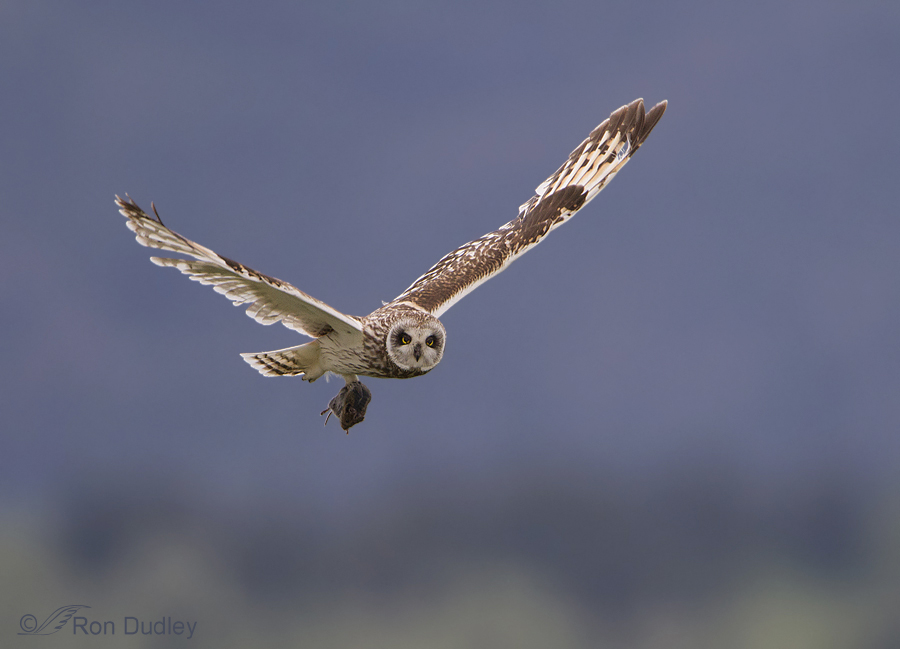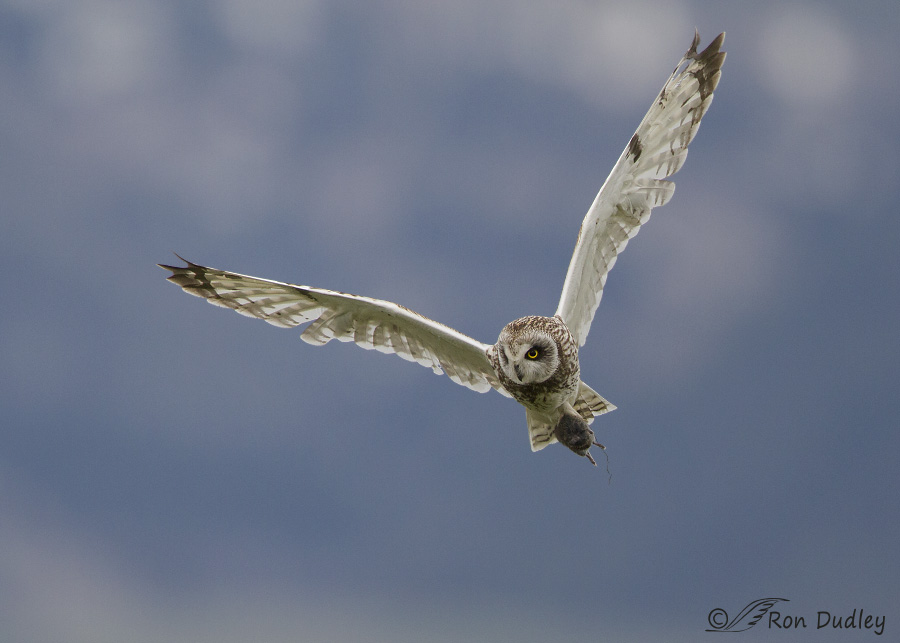Tag: handedness
Short-eared Owls And The “Handedness Phenomenon”

Handedness is a preference for using one hand (or limb) as opposed to the other. It’s a phenomenon many of us associate strictly with humans but other vertebrates can also show handedness, including birds. For example, many parrot species have a strong and consistent preference for using their left foot when bringing food to the beak.
Based on my own observations in the field I believe that Short-eared Owls may also display handedness.
Handedness in Short-eared Owls
Last summer Mia and I spent four days photographing a family of Short-eared Owls in Red Rock Lakes National Wildlife Refuge. There were two baby owls in a nest under a sagebrush guarded over constantly by the female while the male hunted and brought in food. That food in every instance that we saw was a vole (mouse-like rodent). Many of the photos I took were of the male in flight, returning to the area of the nest with a vole in his talons. Male with vole It wasn’t until I returned home and began processing the images that I began to notice that the male always seemed to carry the vole in its left foot. This piqued my curiosity about something I’d never considered – do some birds show “handedness” – the preference of using one limb as opposed to the other? Could this male owl, or perhaps all Short-eared Owls, be left-“handed”? Once again, carrying the vole in the left foot So I decided to do an inventory of my images of these birds to see what would turn up. After culling my photos of these owls from this trip I had 271 photos to go through. Most of those were flight shots of the male and in more than half of them he was carrying a vole. My goal was to try to determine how many “sorties” he made with a vole that I had photographed (I often got multiple shots of the male with the same vole in the same sortie) and determine what percentage of the time he…
The Short-eared Owls of Red Rock Lakes National Wildlife Refuge
Male Short-eared Owl with a vole for the family Red Rock Lakes NWR is simply a wonderful spot on this ol’ earth. Located in SW Montana about halfway between Yellowstone National Park on the East and Interstate 15 on the west, it lies in a beautiful high elevation valley and the setting is stunning. It’s not for the faint of heart though as the weather holds many potentially nasty surprises and the access to the refuge is primitive at best. But that’s one of the things I love about Red Rock. In late June we had the place mostly to ourselves, which is ideal for me. Coyotes howling, other mammals in abundance, birds plentiful, wildflowers galore, spectacular mountain scenery, amazing sunrises and sunsets, weather surprises, bad roads to limit visitation, isolation and especially those incredible Short-eared Owls. I love this place! Female at the nest with one of two youngsters On our second day there we found a pair of nesting Short-eared Owls with two youngsters. The nest was at the base of a sagebrush within a few feet of a road. I have a (very unscientific) theory as to why these birds would make their nest so close to a road with regular traffic. Coyotes are very common on the refuge – we heard them howling often and would see them but they were seldom close to any road. They seem to avoid roads whenever possible. A nest on the ground would be very vulnerable to coyote predation. So I wonder if the choice to build…


